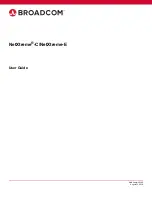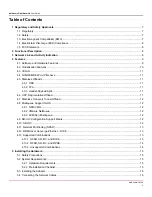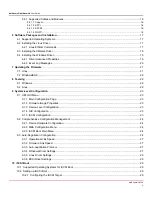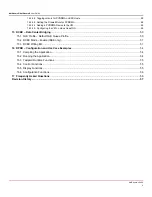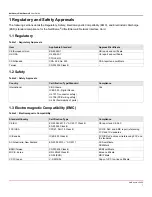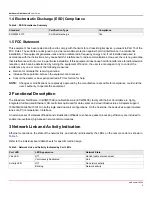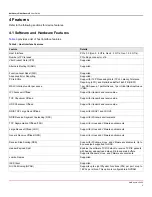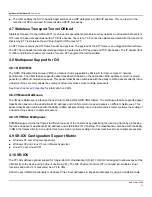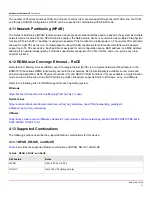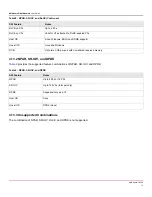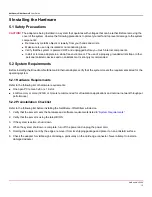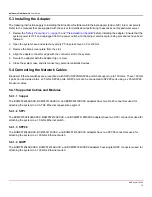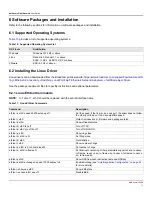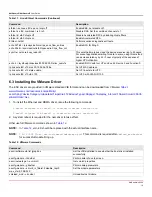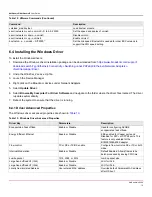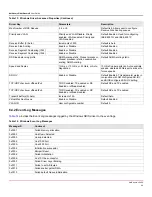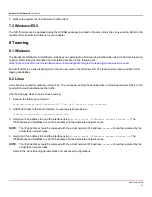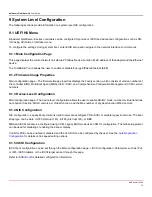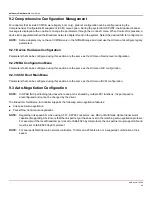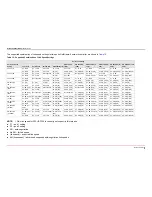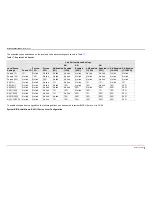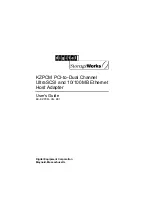
NetXtreme-UG100
12
NetXtreme-C/NetXtreme-E
User Guide
The UFO enables the NIC to handle fragmentation of a UDP datagram into UDP/IP packets. This can result in the
reduction of CPU overhead for transmit side UDP/IP processing.
4.7 Stateless Transport Tunnel Offload
Stateless Transport Tunnel Offload (STT) is a tunnel encapsulation that enables overlay networks in virtualized data centers.
STT uses IP-based encapsulation with a TCP-like header. There is no TCP connection state associated with the tunnel and
that is why STT is stateless. Open Virtual Switch (OVS) uses STT.
An STT frame contains the STT frame header and payload. The payload of the STT frame is an untagged Ethernet frame.
The STT frame header and encapsulated payload are treated as the TCP payload and TCP-like header. The IP header (IPv4
or IPv6) and Ethernet header are created for each STT segment that is transmitted.
4.8 Multiqueue Support for OS
4.8.1 NDIS VMQ
The NDIS Virtual Machine Queue (VMQ) is a feature that is supported by Microsoft to improve Hyper-V network
performance. The VMQ feature supports packet classification based on the destination MAC address to return received
packets on different completion queues. This packet classification combined with the ability to DMA packets directly into a
virtual machine’s memory allows the scaling of virtual machines across multiple processors.
See
Driver Advanced Properties
for information on VMQ.
4.8.2 VMware NetQueue
The VMware NetQueue is a feature that is similar to Microsoft’s NDIS VMQ feature. The NetQueue feature supports packet
classification based on the destination MAC address and VLAN to return received packets on different NetQueues. This
packet classification combined with the ability to DMA packets directly into a virtual machine’s memory allows the scaling of
virtual machines across multiple processors.
4.8.3 KVM/Xen Multiqueue
KVM/Multiqueue returns the frames to different queues of the host stack by classifying the incoming frame by processing
the received packet’s destination MAC address and or IEEE 802.1Q VLAN tag. The classification combined with the ability
to DMA the frames directly into a virtual machine’s memory allows scaling of virtual machines across multiple processors.
4.9 SR-IOV Configuration Support Matrix
Windows VF over Windows hypervisor
Windows VF and Linux VF over VMware hypervisor
Linux VF over Linux KVM
4.10 SR-IOV
The PCI-SIG defines optional support for Single-Root IO Virtualization (SR-IOV). SR-IOV is designed to allow access of the
VM directly to the device using Virtual Functions (VFs). The NIC Physical Function (PF) is divided into multiple virtual
functions and each VF is presented as a PF to VMs.
SR-IOV uses IOMMU functionality to translate PCIe virtual addresses to physical addresses by using a translation table.

